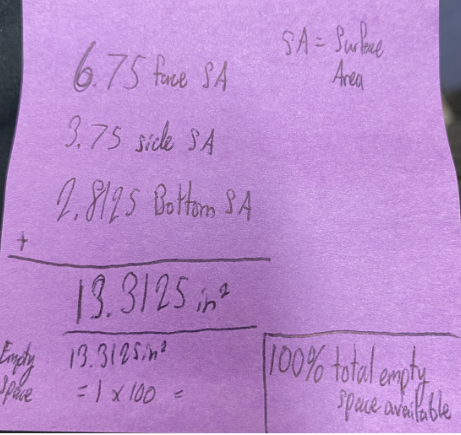

Element E
In Element E, STEAM (Science, Technology, Engineering, Art, and Math) Principales that were used throughout all other documents is documented here. Within this document, any aspects of science, technology, engineering, art, math, mentor feedback, team information, and a gantt chart will be included. This document outlines the whole map of the entire project and STEAM information used throughout the whole project.
Science
Material sciences:
PLA TPU PETG Resin different materials (plastics) have different properties such as melting point, hardness, and flexibility. The materials for the toaster were to be impact resistant but also not flexible. An outer shell was made of a flexible, impact resistant TPU filament, while the inner shell was made of a rigid PLA. The TPU on the outside functions as a case while the inner PLA keeps the form of the toaster from bending and becoming deformed.
Behavioral sciences:
Research was done which suggested that a fidget toy would benefit children with ADHD when they need to concentrate. This is what shaped most of the product’s development.
Different 3D printed materials and plastics were used such as PLA, TPU, PETG, and Resin
Other scientific research that was used was a study concluding that the fidget toy would benefit ages 5+ with ADHD as well as help concentration.
According to Julie Schweitzer’s study of “Do people with ADHD focus more when using a fidget toy than people without?” Her findings conclude that the ADHD group moved significantly more than the (control group) during the trial and that movement with a fidget caused them to get more answers correct than the control group.(4)
Technology
The technology involved with producing the prototype included computers and 3D printers. An FDM (fused deposition modeling) printer lays down small 2 dimensional profiles of a 3D object with a little bit of thickness until it stacks up to a full scale model. The software used to make the files that a FDM printer can read slices an existing 3D object file into thin slices which are translated to 2d line paths and coordinates that the printer needs to follow in order to make the part.
Drill: a drill is a rotary device which utilizes sharp rotating pieces of metal to bore holes through a material. The drill was used to achieve the proper sized holes for screws in the product.
Calipers: calipers are a precise measuring tool which can accurately tell the length of an object. They were used to measure the product and dimension it in relation to other objects.
The Ender 3 Pro was used to create every prototype in possession


OnShape was used to create the whole design and functionality of the Toaster
Google Forms was used to survey individuals and create a visual of different needs of the large population.


Google Sheets to create a spreadsheet to do the math by itself as well as create a visual representation of the data
Engineering
Engineering design process:
During the construction of the prototype, the engineering design process was used, first sketches of potential solutions were presented, a final one was selected, it was refined, a prototype was made, and the prototype was analyzed and tested. The prototype was improved and over time became the final version of the product. (Click on the images below to see more information)
Art
The product was shaped like a toaster because the simple form of the product is similar to that of a toaster. The buttons which are pressed down were designed to look like pieces of toast.
The logo for the product was designed to look simplistic and futuristic. The purpose of this is to make the product appear distinguished and well made so as to be sold for a higher price and make more money. The outside of the toaster was designed to be all blank except for the logo as to look sleek and luxurious.

The “Toaster” came to be when the functionality of the product resembled a toaster, leading to the adaptation of the unpressable buttons on the product to be in the shape of toast pieces
Mathematics
Math was used to calculate price per gram for the materials to determine the cost of the toaster as well as to calculate the surface area of the Toaster.

Dimensions for the product (of the parts)
Surface area of the outside of the product

Expert/Mentor Support
Math was used to calculate price per gram for the materials to determine the cost of the toaster as well as to calculate the surface area of the Toaster.

Gantt Chart

Conclusion
Element E primarily focuses on the use of STEAM principles throughout the whole project and all other elements. Using this Element, the full concise breakdown of all the STEAM principles that was utilized is explained clearly above as well as having supporting images and explanations as needed.









